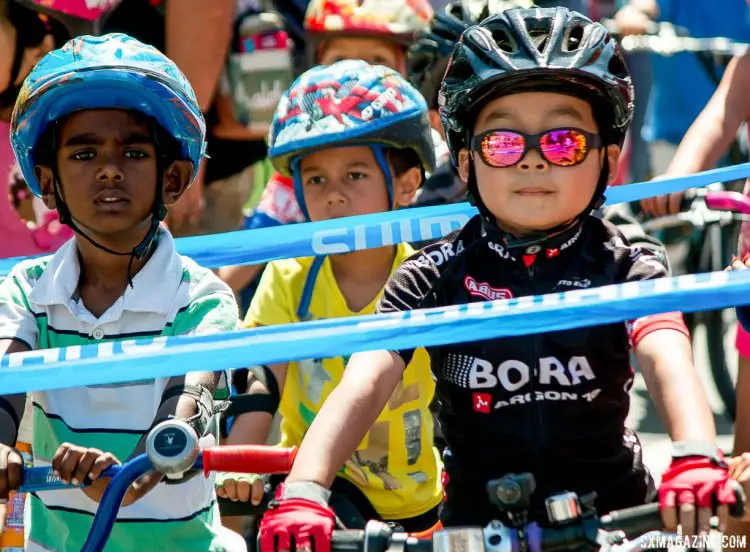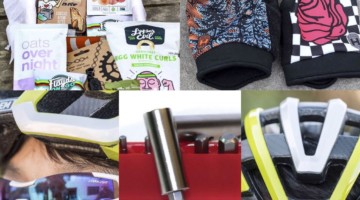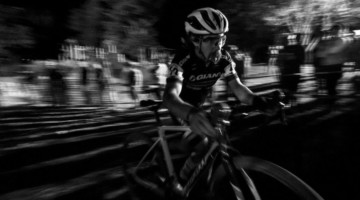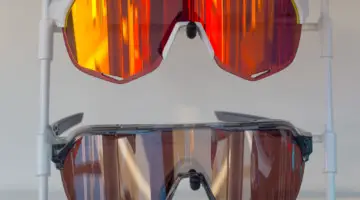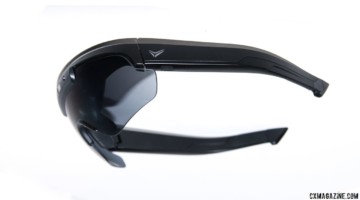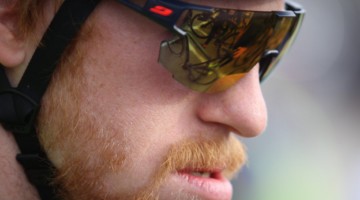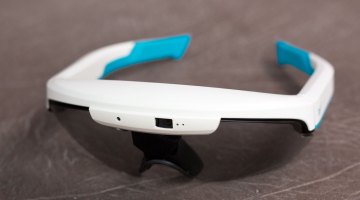If you race cyclocross, chances are you’re training and racing in conditions that vary from bright sun to near darkness, in varied temperatures and humidity. If you enjoy bringing four sets of wheels to the race to make sure you always have the right tread, perhaps adding a few pairs of glasses to the race day bag isn’t a big stretch. But for many of us drawn to a “universal tread” good for most race days, a single pair of high-quality sunglasses that adjust to light and humidity for almost any type of riding is also appealing.
At Press Camp 2016, we had a look and sample of Ryders Eyewear, and came away impressed with the Canadian company’s offerings. But just south of the Canadian border, Vermont-based Julbo USA has quietly offered up glasses based on some of the same technology, with anti-fog, photochromic, and hydrophobic NXT lenses that make a strong case for being ideal for cyclocross. And while Ryders' Fyre glasses won't be out until after cyclocross season, Julbo's NXT-based glasses are available now.
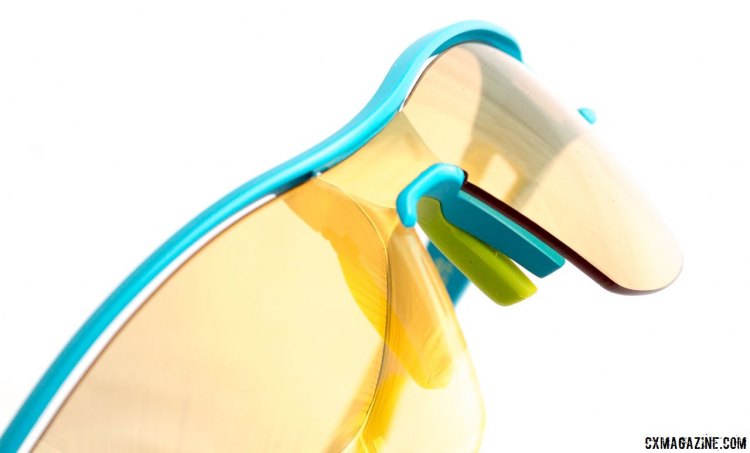
Julbo Aero vented sunglasses with a NXT Zebra lens that features a slight mirrored finish, an anti-fog treatment, photochromic tint, and hydrophobic and oil repellent exterior treatment. $180. © Cyclocross Magazine
The company has been making sunglasses since its first mountaineering eyewear in 1888, and while it still offers mountaineering glasses including its classic Vermont model, it has expanded into other sports including cycling and running. The company sent us several sets of its performance cycling-oriented sunglasses for testing, and the variety in frames, lens treatment and different size options are impressive. The company also offers children’s eyewear, which it introduced in the 90s, and also makes prescription glasses and goggles.
At the height of Julbo’s line are its NXT lenses, and for cyclists, the NXT-based Zebra and Zebra Light lenses are the most relevant. Both are photochromic, have an anti-fog treatment and oil/water-repellent coating. The Zebra Light is, as the name suggests, lighter in tint than the Zebra, varying from what Julbo labels protection category from 1 to 3, while the Zebra varies from 2 to 4. Lenses activate in 22 to 28 seconds—not instantaneous but fast enough to adapt to shaded trail sections when you enter the woods.
We tested both the Aero and Zephyr frames with Zebra Light, Zebra and a red Spectron 3 CF Lenses. Both models with the “standard” mirrored Spectron 3 CF lenses retail for $130, while the high-end anti-fog, photochromic, hydrophobic Zebra lenses add $50 to the price. For cyclocross, we feel the $50 upgrade for the Zebra lenses will be worth it.
Both models feature the same adjustable nose piece and are similar in width, but the Aero features a one-piece lens with a full length vent between the frame and lens, along with a side vent.
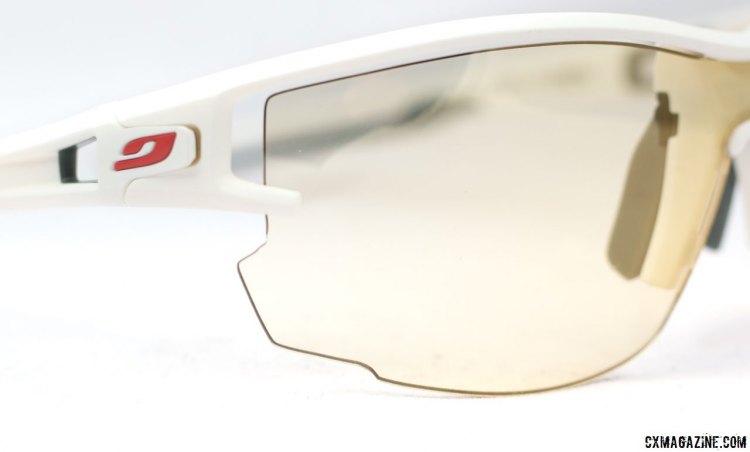
Julbo Aero vented sunglasses feature a full-length vent above the Zebra Light lens, a side vent, and an anti-fog treatment for great vision regardless of your speed or the current temperature or humidity level. © Cyclocross Magazine
The Zephyr features two separate lenses separated by the nose piece, and has a slightly tighter radius bend to the frame. The Zephyr features amazing "360° adjustable temples," which can be bent and shaped along two thirds of their length for a truly customized fit.
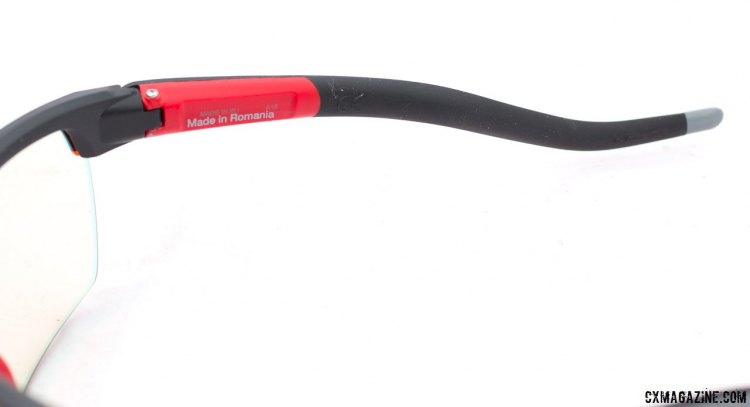
Julbo Zephyr Zebra Light photochromic sunglasses with 360 temples that are fully adjustable/bendable to fit your noggin. © Cyclocross Magazine
Curiously, although both frames can be ordered with the high-end Zebra lenses, the Aero frame is made in France while the Zephyr is made in Romania.
A Zebra with Next-Level Optics
The Zebra lenses are what separates the Julbo glasses from many other products out there. First, the NXT lenses use Trivex material instead of polycarbonate. Trivex is said to offer better optical clarity, impact resistance and weight savings over the typical polycarbonate found in other eyewear.
If you’ve got good vision, swap out a pair of polycarbonate glasses for these Trivex NXT lenses, and you’ll convince yourself you’re seeing more detail as you squint to read signs far away. "Wow!" was a common response after first putting the NXT-based Zebra or Zebra light lenses on. They're very sharp.
It’s not uncommon for racers to spend thousands on a slightly lighter or stiffer set of wheels or frame for hard-to-measure performance improvements, yet we often overlook simple things like improving vision when looking for performance gains. Could you go faster or avoid a crash by seeing better lines due to better eyewear? Probably not if they’re covered with mud, but perhaps if it's a clean day. It’s an area worth considering for an upgrade.
Vision isn’t only impacted by optical clarity but light transmission. The Zebra Light lenses have been our go-to eyewear lately for sunset-into-night rides, but are also a fine choice for rides on cloudy days with a lot of shaded trails. On a bright sunny day on the snow or lake, we’d probably prefer something darker than the Zebra Light lens, but on sunny days in and out of the woods, it's a great, versatile option.
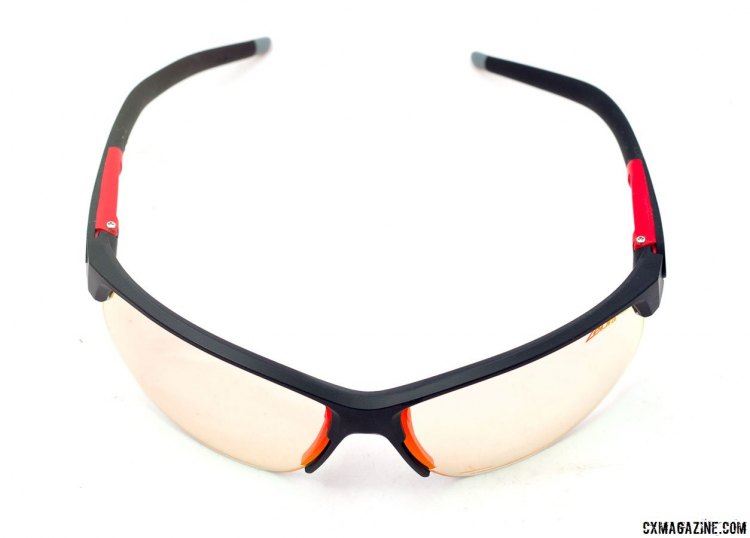
Julbo Zephyr Zebra Light photochromic sunglasses with 360 temples that conform to your head. © Cyclocross Magazine
The Zebra lens adds an extra layer of light filtering over the Zebra Light. Whether it’s overcast, early morning, bright sun or fading light, the Zebra photochromic lens does it all well. It filters out a bit too much light for night riding, but worked so well on sunny rides that dipped into dark trails that we forgot we were wearing glasses.

Julbo Aero vented sunglasses with Zebra lens features a slight mirrored finish. © Cyclocross Magazine
Both the Zebra and Zebra Light lenses have a subtle colored mirror finish to them.
Our one nitpick with both the Aero and Zephyr models is that the adjustable nose piece doesn’t quite have the same adjustability for smaller nose bridges as some wire-based nose pieces we’ve seen on eyewear from other companies.
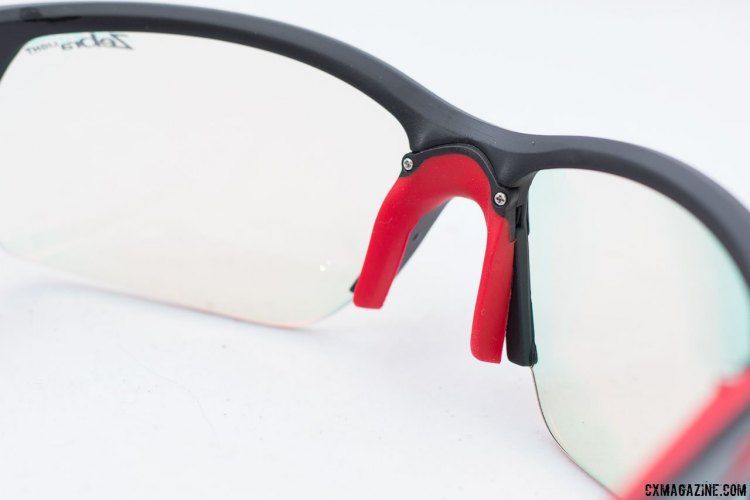
Julbo Zephyr and Aero sunglasses feature an adjustable nose piece that is low in profile but may not conform bend in enough to perfectly fit the flattest or smallest nose bridges. © Cyclocross Magazine
The nose pads bend in, but the lower half of them are flexible, and the pads are small in footprint. However, the fully-bendable temples on the Zephyr ensured a snug fit and made the nose piece a non-issue.
At $180 for the Zebra and Zebra light models, these glasses aren't cheap. That’s still a lot of money for sunglasses when there’s a $10 pair by the register at your local drug store, or $40 glasses at your local bike shop, but those options won't have the optical clarity and technical features of the Julbo Zebra lenses. For the NXT lens technology you get in the Zebra lenses, at $180 (or $190 with polarization) we believe they’re a good value, as Ryders’ upcoming Fyre models with NXT lenses will start at $220, and other brands like Oakley fall within this price range without the antifog treatment and charge more for photochromic.
A Future Vision
Julbo also should be commended by offering a slew of great models for the little ones. Their eyes are just as important as adult eyes and deserve similar protection. Julbo aims to please with at least 15 different youth-oriented models for the young cyclist in your life.
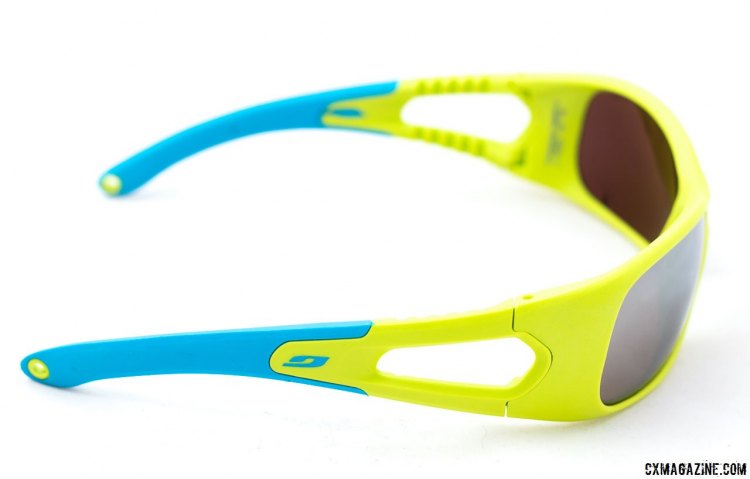
The $24 Julbo Trainer sunglasses are aimed at riders ages 3-6, and feature a mirrored Spectron lens and holes for an eyeglass strap. © Cyclocross Magazine
Our young tester had the good fortune to try several models, but the Lola model, a Europe-only youth model for ages 6-10, ended up being his favorite for riding and racing.
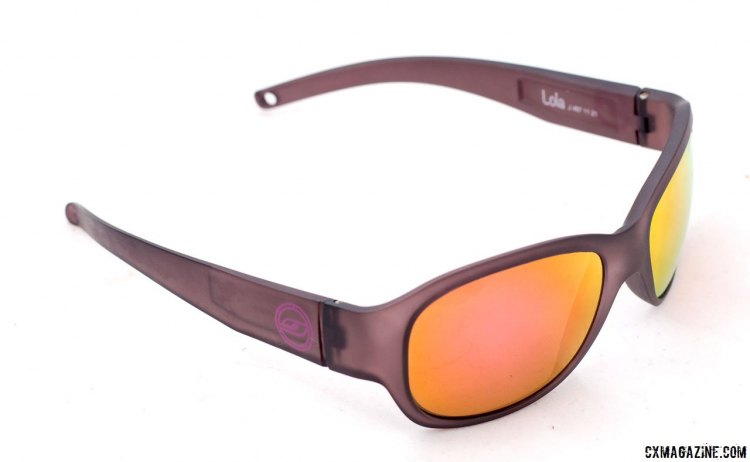
Julbo's has at least 15 models of youth sunglasses. This model, the Lola, is a Europe-only model, but features a Spectron mirrored finish and is targeted at 6-10-year-old girls, but our 5-year-old boy tester loved them. © Cyclocross Magazine
Julbo has tiny models made for babies, and its entire youth line varies from $24 to $50 depending on frame and finish. Zebra and Zebra lenses are not available in the youth frames, but a polarized lens is an option. Some adult and youth models offer a hole at the end of temples for an eyeglass strap.
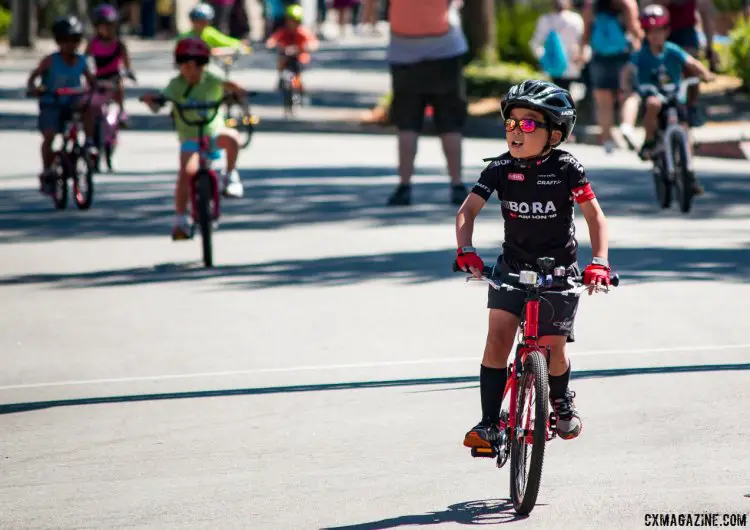
Julbo's youth sunglasses help the young cyclist in your life look and feel race ready. © Cyclocross Magazine
Youth-oriented glasses come in a hard plastic case, perfect for protecting the shades from being crushed or dropped, while the top-end glasses come in a zippered hard case and storage bag that doubles as a cleaning cloth.
A Different Look
Julbo also offers some more casual glasses, including eyewear oriented for mountain biking, water sports and casual wear. The mountain bike-oriented Dirt 2.0 and casual polarized Blast caught our eye, but we didn't have a chance to test those models. The $70 Cortina model, with its blue Spectron lens, was a fun option for sunny days after rides or at the beach.
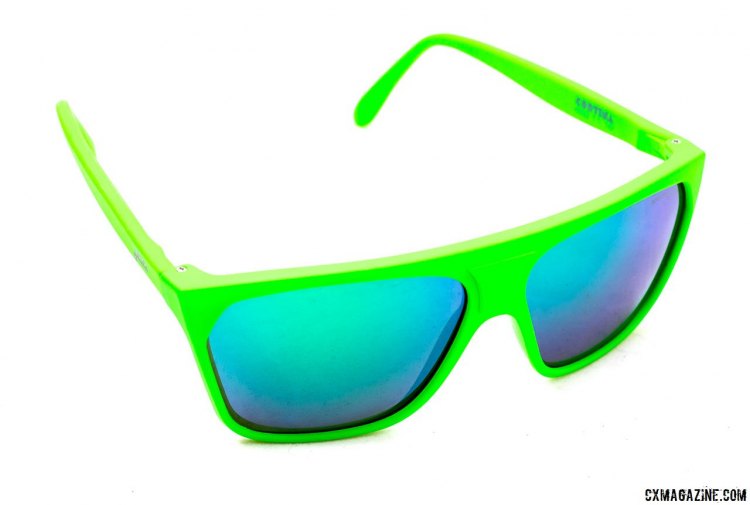
Julbo also offers some casual sunglasses, including this high-vis $70 Cortina model with blue Spectron lens. © Cyclocross Magazine
Julbo might not be what you see on the most famous athletes in cycling, but one way to interpret that fact is that you’re not paying for big marketing budgets or huge sponsorships. We’re thoroughly impressed with the variety and quality of these Julbo offerings, and if you’re in the market to upgrade your shades, they’re worth a look. Julbo sells through a limited number of retailers, along with online retailers like Backcountry.com, REI, Amazon and Eastern Mountain Sports, but the company also sells direct and offers a 30-day return policy.
More info: julbo.com
Julbo Eyewear Aero / Zephyr / Cortina / Youth Glasses Photo Gallery:












